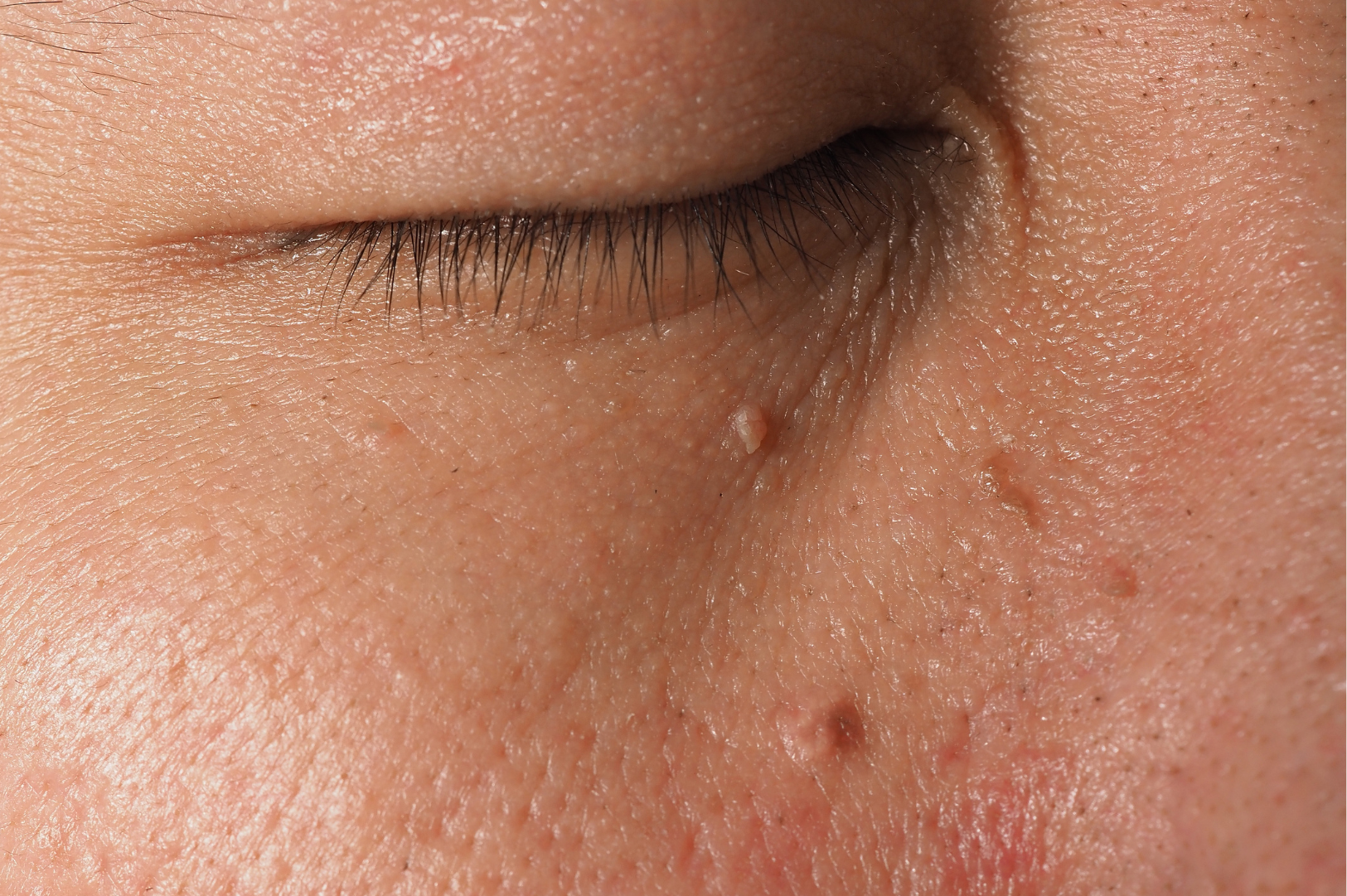
Skin tags, also known as Acrochordons, are a common skin condition you may notice in places where your skin folds, such as your neck and eyelids. Small, non-cancerous fleshy overgrowths develop when the skin rubs against itself. They usually do not cause any symptoms except for the obvious skin overgrowth. They are non-contagious and harmless, not requiring any treatment. However, suppose their presence bothers you due to their unaesthetic appearance. In that case, you can consult a dermatologist (a doctor specializing in diagnosing and treating conditions related to the skin, hair, and nails) for removal.
This informative blog will discuss everything about skin tags, from their causes, risk factors, symptoms, and diagnosis to treatment. So buckle up and read on!
Skin tags are small, harmless, non-contagious, and non-cancerous growths that hang from your skin. These are also called acrochordon, cutaneous tag, cutaneous papilloma, or fibroepithelial polyp by dermatologists. They tend to be the same color as your skin and may range between 1 mm to 1 cm in diameter. Skin tags commonly comprise collagen and blood vessels surrounding the skin. They are found in the folds of the skin where it rubs together, such as the armpits, groin, anus, thighs, eyelids, neck, or under the breasts.
As you age, you may notice more skin tags developing in your body. They occur in approximately 1 in every two adults.
The exact cause of skin tags is now known, but they may happen when clusters of collagen and blood vessels become trapped inside thicker pieces of skin. Skin tags are mainly caused by skin rubbing against the skin.
Though anyone can develop skin tags, the following factors may increase your susceptibility:
Skin tags are usually harmless and painless skin growths. You may notice the following symptoms:
Dermatologists easily diagnose skin tags based on their appearance. Your doctor may record your medical and past history, family history, and lifestyle habits to weigh your risks. A quick physical examination can help rule outgrowths that look like skin tags.
Most skin tags do not require treatment since they are harmless; some may even fall off alone. Treatment for skin tags is usually recommended for cosmetic reasons.
The following procedures may be used to remove a skin tag:
Skin tags on the eyelids and those near the eyelid margins may require intervention by an ophthalmologist or specialist eye doctor.
If you notice any skin growth, it is best to consult your doctor. They may resemble a wart or a mole, but getting them evaluated can help rule out other skin conditions like cancer. If your skin tag looks atypical or unusual, your doctor may recommend additional tests like skin biopsy as a precaution.
Skin tags are common skin conditions you may experience at least once in your lifetime. These small, flesh-colored skin growths hang from a stalk and are usually harmless and painless. They do not require treatment. However, if they grow in visible areas, negatively impacting your appearance or rubbing against clothes and jewelry, causing bleeding, it is best to get them removed. Seeking skin tag removal from an experienced dermatologist is essential since it lowers the risk of complications and minimizes scarring.
The following conditions can look like skin tags:
Most often, at-home skin tag removal kits are not safe and result in the following complications:
Usually, skin tag removal does not hurt much and causes only mild discomfort. These procedures are performed under local anesthesia to numb the area and reduce pain and discomfort.
You can lower your risk of skin tags by following the below tips:
No, skin tags are not contagious. Unlike warts, they do not spread to other parts of your body or to other people even through direct contact.
No, skin tags don't grow back. Once you get them removed, you will not notice them grow back. However, you may see new skin tags developing in other areas.
Some home remedies help dry out the tag and shrink it in size. These include: